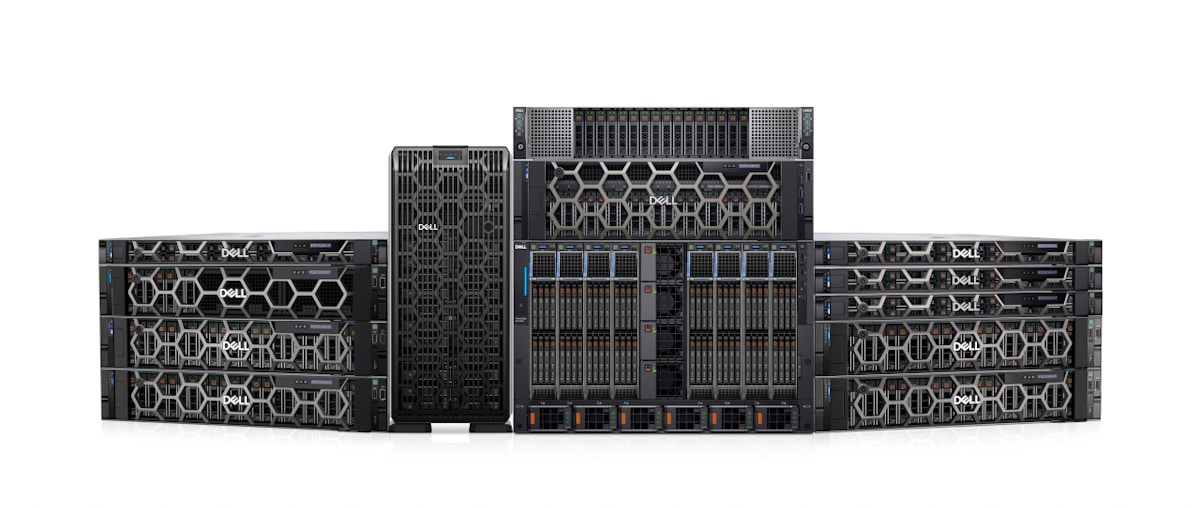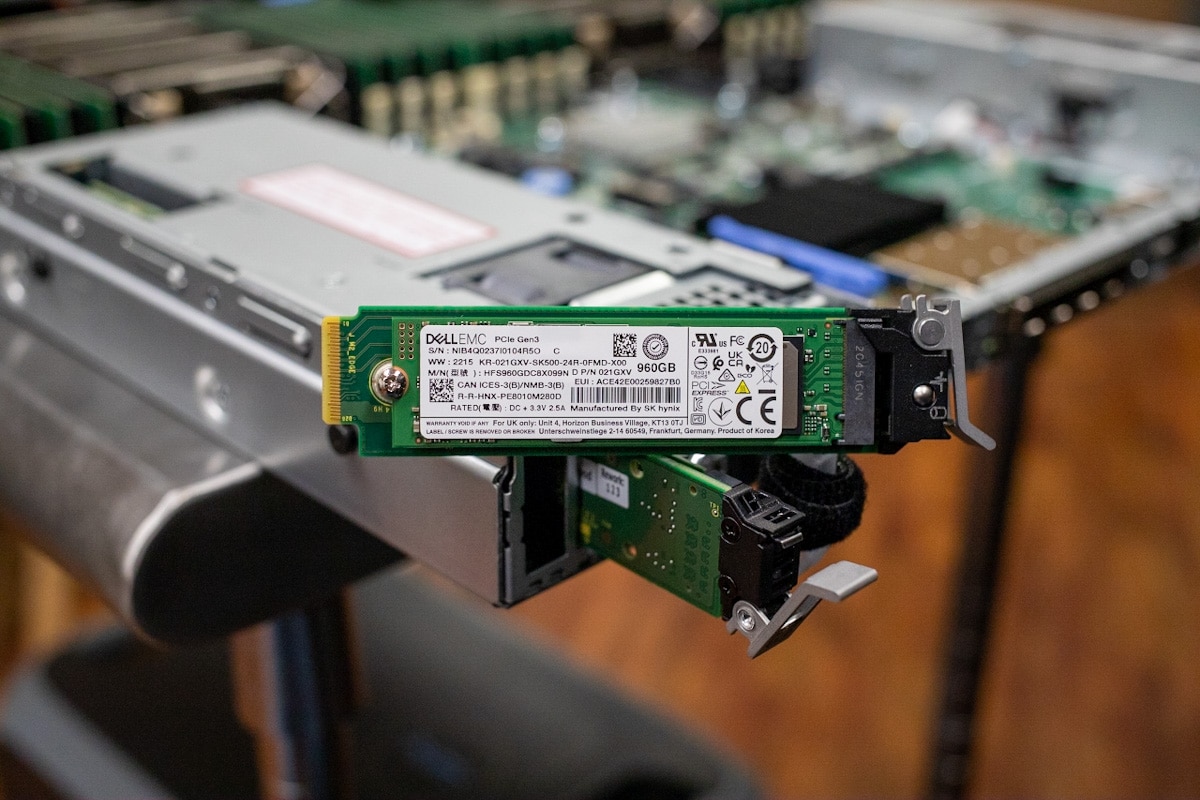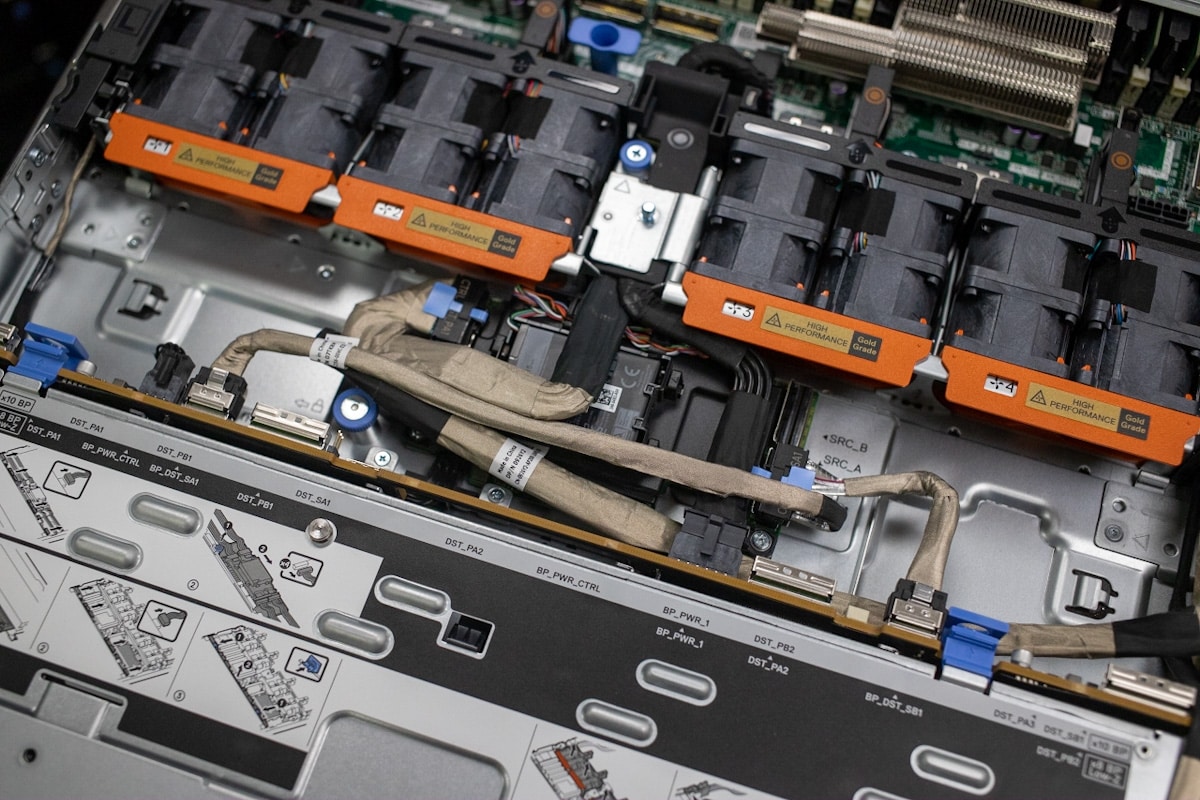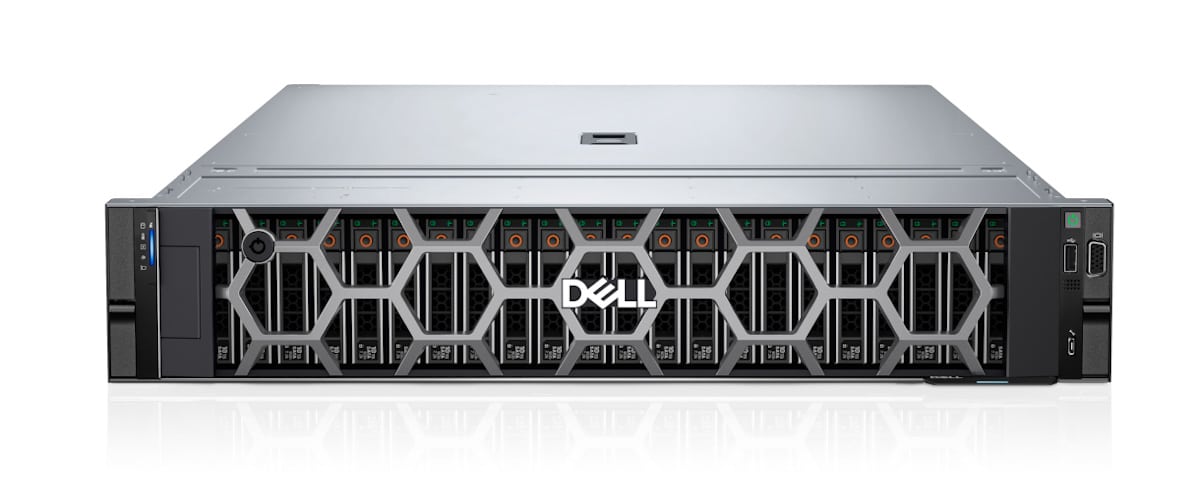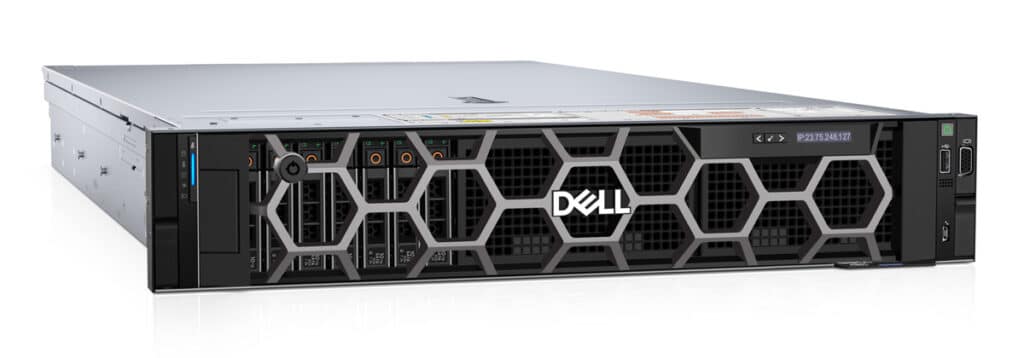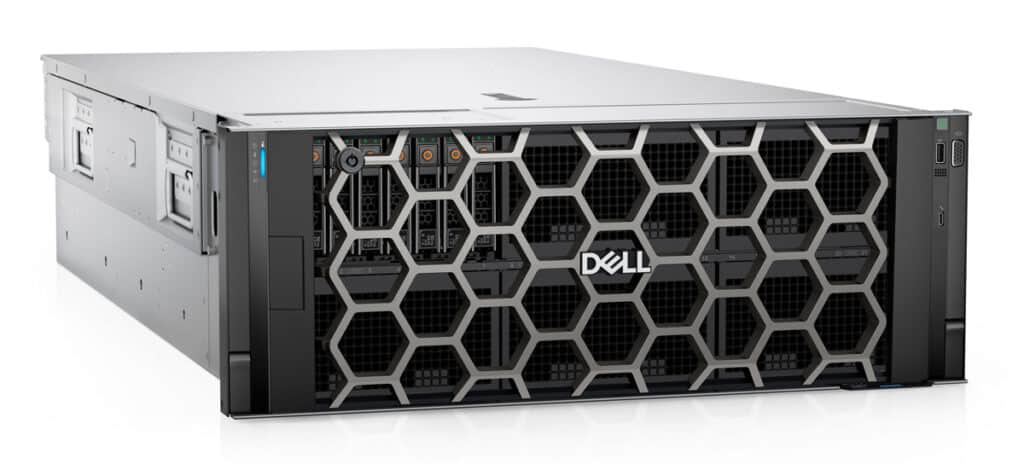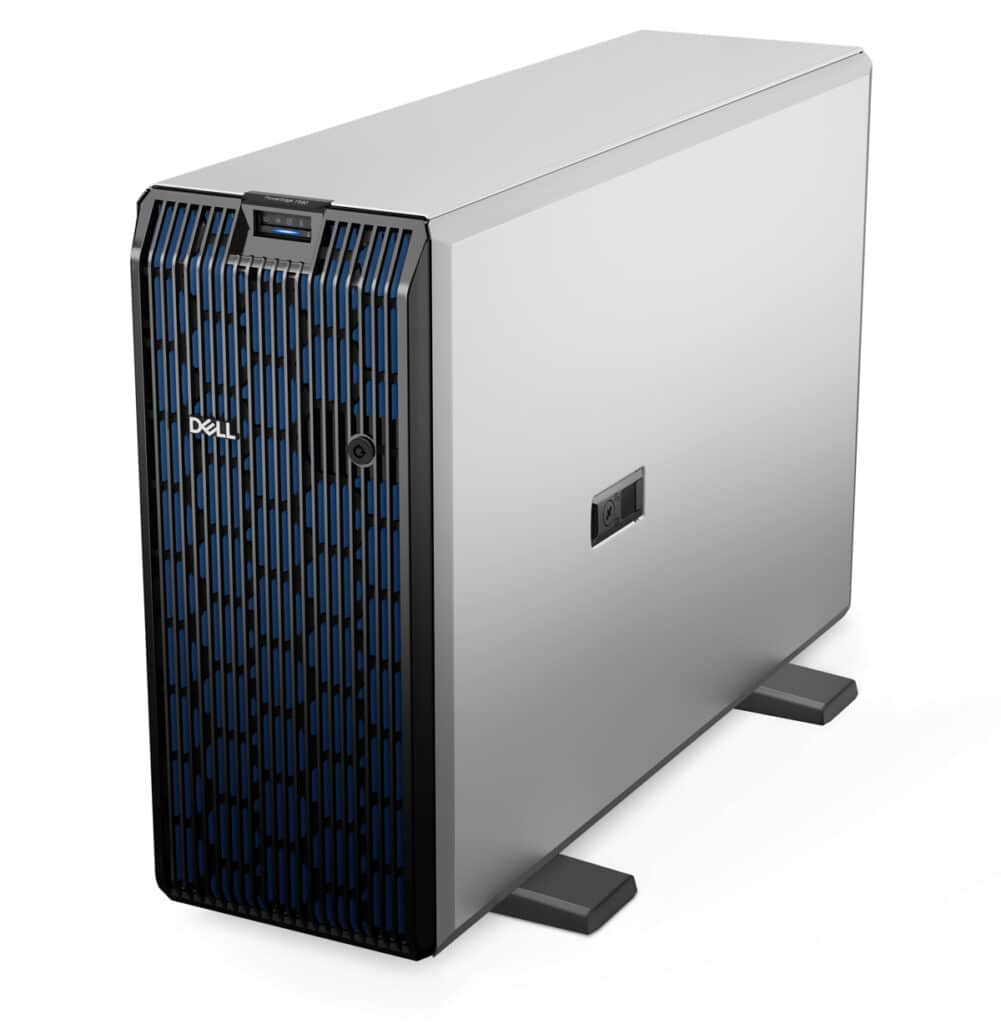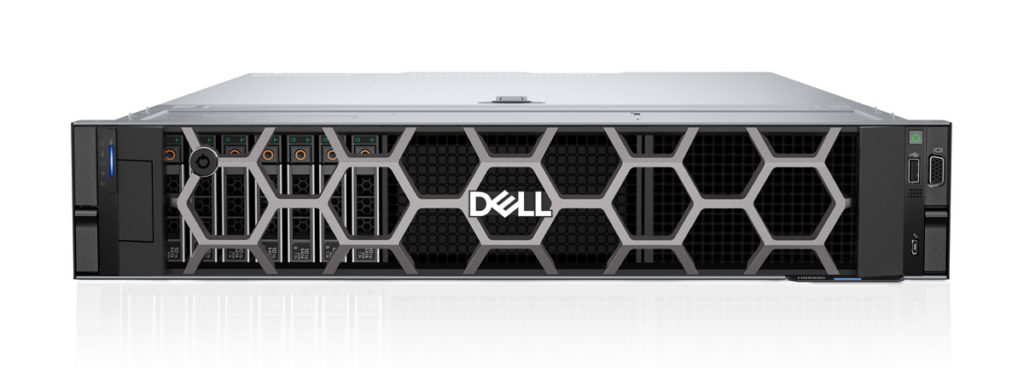Dell has added over a dozen next-generation systems to the extensive portfolio of Dell PowerEdge G16 servers. These new systems are to accelerate performance and reliability for powerful computing across core data centers, large-scale public clouds, and edge locations. Featuring rack, tower, and multi-node form factors, the new PowerEdge servers support the new 4th-gen Intel Xeon Scalable processors.
Dell has added over a dozen next-generation systems to the extensive portfolio of Dell PowerEdge G16 servers. These new systems are to accelerate performance and reliability for powerful computing across core data centers, large-scale public clouds, and edge locations. Featuring rack, tower, and multi-node form factors, the new PowerEdge servers support the new 4th-gen Intel Xeon Scalable processors.
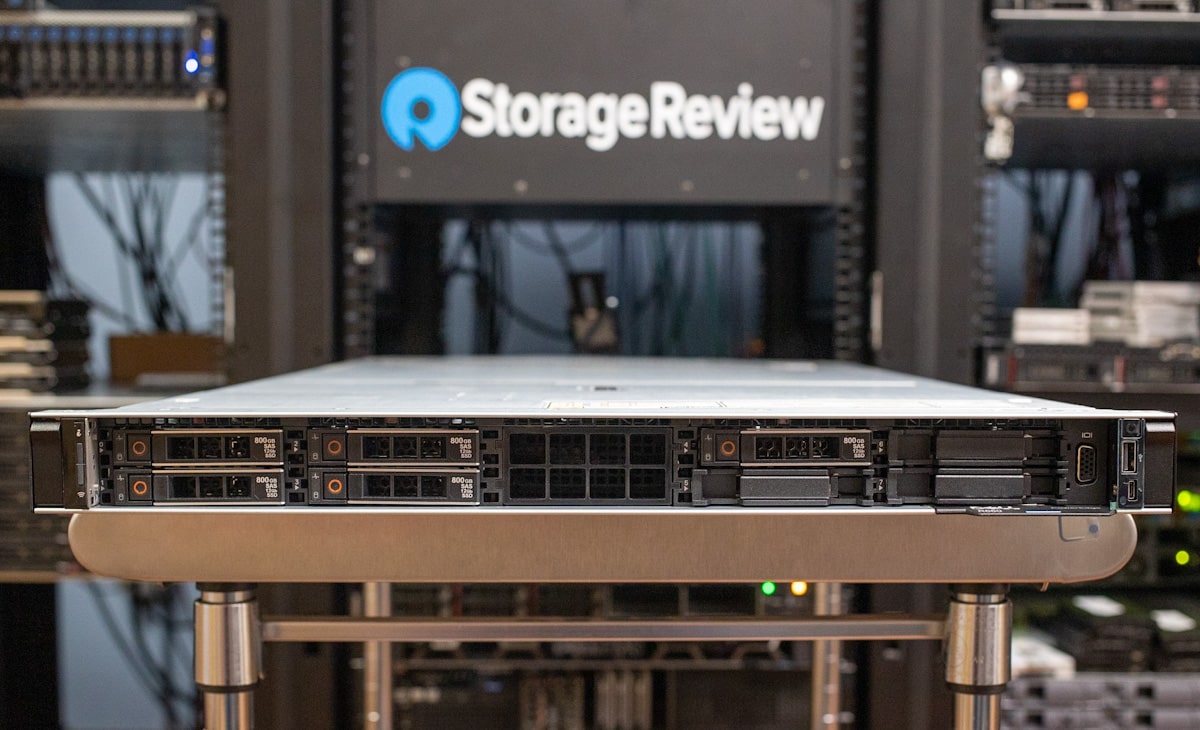
Dell’s new PowerEdge servers are built excel in demanding tasks, from artificial intelligence and analytics to massive databases. In November 2022, the portfolio was expanded to include the PowerEdge XE series featuring NVIDIA H100 Tensor Core GPUs and the NVIDIA AI Enterprise software package for a comprehensive, production-ready AI platform, leveraging the latest breakthroughs in AI and machine learning.
With today’s release, Dell is launching a number of new and updated systems that take advantage of all Intel has to offer. This includes PCI Gen5 slots, DDR5, and servers with Gen5 SSD support in the E3.S form factor. Beyond the massive performance gains in going from Gen4 to Gen5 SSDs, there’s a capacity gain as well, as these are 7mm z-height compared to 15mm in the U.2/U.3 SSD. This means Dell can squeeze 60% more density in the 1U chassis of the R660 and 33% more in the R760. Dell also expects better airflow through the servers with these physically smaller drives.
Server Management and Deployment
Dell has also made enhancements to their monitoring software, making server management easier.
Dell CloudIQ combines proactive monitoring, machine learning, and predictive analytics while providing a comprehensive view of servers regardless of their location. Updates include improvements in server performance forecasting, selected maintenance operations, and new virtualization visualization.
Dell iDRAC9 makes systems easier to deploy and diagnose, equipped with updated features such as Certificate Expiry Notice, Telemetry for Dell Consoles, and GPU monitoring. Through iDRAC9, Dell PowerEdge G16 server components can be easily updated, making lifecycle management simple. This includes everything like the PERC12 card, BOSS drives, SSDs, DPUs and more.
The Dell ProDeploy Factory Configuration service provides PowerEdge servers that are ready to install and preconfigured with the customer’s chosen operating system, hypervisor software, and settings for RAID, BIOS, and iDRAC. The Dell ProDeploy Rack Integration service delivers and installs production-ready racked and networked PowerEdge servers for companies expanding their data center environments or undergoing IT modernization.
System Cooling and Efficiency
The new Dell PowerEdge servers are designed with a focus on environmental sustainability, providing customers with triple the performance over the previous generations of servers. This means more powerful and efficient technology while less floor space is required. The Smart Flow design is a new feature within the Dell Smart Cooling suite. It increases airflow and cuts fan power by up to 52%, resulting in more efficient data centers.
Dell OpenManage Enterprise Power Manager 3.0 allows customers to better manage energy efficiency, monitor carbon emissions, and set power caps up to 82% faster to limit overall energy usage. This enhanced sustainability target tool also determines overall server usage, virtual machine and facility energy consumption, and leak detection for liquid cooling systems. Custom cooling options are also available via iDRAC.
While most of these Dell PowerEdge 16G systems will be sold as air-cooled, Dell is offering optional CPU direct liquid cooling solutions in some configurations. Dell has shown off versions of this tech in the past, as enterprise customers slowly come around to the idea of using liquid cooling in the data center. It’s reasonable to expect Dell to continue to bring more liquid options to market, especially as customers consider more dense GPU configurations.
To aid in supporting DLC systems, Dell has two new families of racks that help customers with an integrated solution. The DLC3000 is a stand-alone solution that just needs a water connection to operate and is designed for small deployments of 4 or fewer racks. It comes with the rack, rack manifold, and in-rack cooling distribution unit (CDU). The DLC7000 is for larger-scale operations and is meant to be connected together with an in-row CDU.
Four next-generation Dell PowerEdge servers will be available with the EPEAT silver designation, while 46 systems will be designated as EPEAT bronze. The EPEAT ecolabel is a leading global designation that covers products and services from the technology sector that demonstrate a responsible purchasing decision.
Security
The Dell PowerEdge 16g servers help organizations implement a “Zero Trust security” approach, by constantly verifying access and treating all users and devices as potential threats before granting access to resources. The servers are equipped with silicon-based hardware root of trust and features such as Dell Secured Component Verification (SCV) to ensure security from the design to the delivery phase. Additionally, multifactor authentication and integrated iDRAC verify users before granting access.
With the help of these advanced security features, the secure supply chain of Dell PowerEdge servers allows customers to further strengthen their Zero Trust approach, by providing cryptographic verification of components at the customer’s site. As a result, this extends supply chain security to the end-point.
Scalable, Cost-Effective Options Via Dell APEX
Dell Customers looking for cost-effective options can now consume PowerEdge servers as a subscription via Dell APEX today. By leveraging advanced data collection and processor-based measurement on an hourly basis, customers can adopt a flexible approach to avoid the expense of procuring more compute resources than they actually need.
Dell Technologies plans to expand its Dell APEX offerings by providing bare metal compute services at various locations: on-premises, at the edge, or in colocation facilities. This will be available through a predictable, monthly subscription and configured through the APEX Console, which Dell indicates will allow their customers to fulfill their workload and IT operational requirements with scalable and secure compute resources.
Data Processing Units (DPUs)
Many PowerEdge G16 servers can be equipped with NVIDIA Bluefield-2 data processing units. NVIDIA Bluefield-2 is a data processing unit that can offload, accelerate and provide workload isolation capabilities for tasks like networking, security, and storage. Based on the NVIDIA Arm-based DPU architecture, it is integrated with the server’s CPU and memory, providing a high-performance, low-latency data processing solution to improve the performance and efficiency of private, hybrid, and multicloud deployments.
BOSS-N1
Booting these servers has advanced as well with a new Dell BOSS-N1 setup. The BOSS-N1 is a segregated RAID controller for OS with secure UEFI boot that is rear-facing and hot-pluggable. As the N implies, this time these drives are NVMe instead of SATA, which provides organizations with more options, better performance, and higher capacity points.
Hardware RAID PERC12
The Dell PowerEdge 16G servers get a new RAID controller option with the PERC12. This controller offers 2X better performance than PERC11 and 4X better than PERC10. It also supports all drive interfaces: SAS4, SATA & NVMe and offers x16 connectivity to devices so they can take full advantage of PCIe Gen5 throughput. Dell has also focused on RAID rebuild times, which are quoted to be twice as fast with PERC12. Dell also has an H965e External controller that will provide support for new 24Gb SAS JBODs.
Dell PowerEdge R760 / R760xs
The Dell PowerEdge R760 offers exceptional AI inferencing capabilities, quoting up to 2.9x improvement with the new 4th-Gen Intel Xeon Scalable processors (which feature Intel Deep Learning Boost and Intel Advanced Matrix Extensions).
Moreover, it allows for up to 20% more VDI users with an increase of over 50% in SAP Sales & Distribution (used to manage and track the sales and distribution processes of a company, such as customer orders, deliveries, and billing) users per server when compared to its predecessor.
Dell PowerEdge R760 high-level specs
- Up to two 4th Generation Intel Xeon Scalable processors with up to 56 cores per processor
- Support for up to 2x 350W processors
- Memory
- Up to 32 x DDR5 RDIMMs
- DIMM Speed: Up to 4800 MT/s
- Up to 32 x DDR5 RDIMMs
- Up to 8 x PCIe Slots (with up to 4 PCIe Gen5), SNAP I/O option
- Support for 2x 300W DW GPUs or 6x 75W SW GPUs
- Optional 2 x 1GbE LOM + 1 x OCP 3.0 slot
- Storage
- Up to 12 x 3.5” SAS/SATA HDDs
- Up to 24 x 2.5” SAS/SATA HDD/SSDs
- Up to 16 x 2.5” SAS/SATA HDD/SSDs + 8 x 2.5” NVMe SSDs
- Up to 4 x rear 2.5” SAS/SATA HDD/SSDs or NVMe SSDs
- Rear Hot-Plug BOSS-N1 (2 x M.2 NVMe) for boot
In addition to the standard R760, there’s a PowerEdge R760xs variation which, as in previous xs models, is tuned for virtualization workloads. This means mid-range CPUs that are consistent with hypervisor licensing and fewer DIMM slots, which saves cost, makes the servers easier to cool, and lets Dell go with smaller power supplies.
Dell PowerEdge R760xs high-level specs
- CPU
- Up to two 4th Generation Intel Xeon Scalable processors with up to 32 cores per processor, air-cooled
- Support for up to 2 x 250W processors
- Memory
- Up to 16 x DDR5 RDIMMs (1TB max)
- NVDIMM: No
- DIMM Speed: Up to 4800 MT/s
- Storage
- Up to 8 x 3.5″ SAS/SATA/SATA
- Up to 12 x 3.5″ SAS/SATA HDDs
- Up to 8 x 2.5” SAS/SATA HDD/SSDs
- Up to 16 x 2.5” SAS/SATA HDD/SSDs or NVMe SSDs
- Up to 16 x 2.5″ SAS/SATA HDD/SSDs + 8×2.5″ NVMe SSDs
- Rear: 2 x 2.5” (limited configs) SAS / SATA / NVMe (PERC 11 & 12)
- Rear Hot-plug BOSS-N1 (2 x M.2 NVMe) for boot
- Internal: USB. No IDSDM
- GPU
- Up to 2 x 75W (SW) HL/HH GPU (A2 NVIDIA cards)
Dell PowerEdge R660 / R660xs
The PowerEdge R660 is a single rack U server with support for 2 Intel CPUs up to 56 cores each. The R660 has support for up to 16 drives and up to 3 PCIe slots, which can each support a single-width GPU. The R660 brings to bear tremendous compute density for mainstream workloads and is a popular server style for software-defined solutions like vSAN.
Dell PowerEdge R660 high-level specs
- Up to two 4thGeneration Intel Xeon Scalable processors with up to 56 cores per processor
- Support for up to 2x 350W processors
- Memory
- Up to 32 x DDR5 RDIMMs
- DIMM Speed: Up to 4800 MT/s
- Up to 3 x PCIe Slots (with up to 2 PCIe Gen5), SNAP I/O option
- Up to 3 x SW GPUs
- Optional 2 x 1GbE LOM, 1 x OCP 3.0
- Storage
- Up to 10 x 2.5” SAS/SATA HDD/SSDs; or NVMeSSDs
- Up to 2 x 2.5” (rear) SAS/SATA HDD/SSDs; or NVMeSSDs
- Rear Hot-Plug BOSS-N1 (2 x M.2 NVMe) for boot
Also announced is the xs version–an advanced 1U/2S server designed for medium-density virtualization and cloud-native workloads as well as medium-duty traditional databases and scale-out databases.. Thanks to its 1DPC design (which enables high memory performance and scale-out clusters), the R660xs is also well-suited for high-performance computing (HPC) environments.
Dell PowerEdge R660xs high-level specs
- CPU
- Up to two 4th Generation Intel Xeon Scalable processors with up to 32 cores per processor, air-cooled
- Support for up to 2 x 250W processors
- Memory
- Up to 16 x DDR5 RDIMMs (1TB max)
- NVDIMM: No
- DIMM Speed: Up to 4800 MT/s
- Storage
- Up to 4 x 3.5″ SAS/SATA/SATA
- Up to 8 x 2.5” SAS/SATA HDD/SSDs
- Up to 10 x 2.5” SAS/SATA HDD/SSDs or NVMe SSDs
- Rear: 2 x 2.5” SAS / SATA / NVMe w/ NVMe RAID (PERC 11 & 12)
- Internal: USB and Internal BOSS-N1 (2 x M.2 NVMe) for boot. No IDSDM
- No GPU support
Dell PowerEdge R860
The Dell PowerEdge R860 brings four Intel 4th Gen Xeons to bear with support for 64 DIMMs in a 2U chassis. These systems are ideal for in-memory database workloads, extremely dense virtualization, and even AI/ML workloads that are dependent on CPU. The system can be configured with 32 drive bays and eight PCIe Gen5 slots.
Dell PowerEdge R860 high-level specs
- Up to four 4th Generation Intel Xeon Scalable processors with up to 60 cores per processor.
- Support for up to 4 x 350W processors
- Memory
- Up to 64 x DDR5 RDIMMs
- DIMM Speed: Up to 4800 MT/s
- Up to 8 slots PCIe Gen4 or Gen5
- No SNAPI, No CXL
- No GPU support
- 1 x 1GbE LOM and 1 x OCP3 NIC
- Storage
- Up to 24 x 2.5” SAS/SATA HDD/SSDs
- Upto 24 x 2.5” NVMeSSDs
- Upto 8 E3.S NVMe
- Rear: Upto 2 x 2.5” Hot Plug SAS/SATA or NVMe
- Rear Hot-Plug BOSS-N1 (2 x M.2 NVMe) for boot. No IDSM.
Dell PowerEdge R960
Dell PowerEdge R960 is similar to the R860 in that it has the same compute and memory profile, but it comes in a 4U chassis that offers a little more storage and expansion.
Dell PowerEdge R960 high-level specs
- Up to four 4th Generation Intel Xeon Scalable processors with up to 60 cores per processor. Support for up to 4 x 350W processors
- Memory
- Up to 64 x DDR5 RDIMMs
- NVDIMM: No
- DIMM Speed: Up to 4800 MT/s
- GPU: Up to 4 DW GPUs (350w each)
- Storage:
- Up to 32 x 2.5” SAS/SATA HDD/SSDs
- Up to 24 x 2.5” NVMe SSDs
- Up to 16 x E3.S NVMe
- Rear Hot-Plug BOSS-N1 (2 x M.2 NVMe) for boot. No IDSM.
- Bandwidth: Up to 32Gb NVMe/24Gb SAS/6Gb SATA
Dell PowerEdge T560
The new PowerEdge T560 server is designed to power medium-duty AI and ML-tailored inferencing algorithms for timely and accurate business insights. With built-in features for collaborative applications, it is the perfect choice for medium businesses exploring the benefits of software virtualization, whether on-site or remotely.
Dell PowerEdge T560 high-level specs
- Up to two 4th Generation Intel® Xeon® Scalable processors with up to 32 cores per processor, air-cooled Support for up to 2 x 250W processors
- Memory
- Up to 16 DDR5 RDIMMs (1TB Max)
- DIMM Speed: Up to 4800MT/s
- Storage
- Up to 12 x 3.5” Hot Plug SATA/SAS HDD/SSDs
- Up to 24 x 2.5” Hot Plug SAS/SATA HDD/SSDs
- Up to 8 x 3.5” Hot Plug SATA/SAS HDD/SSDs and 8 x NVMe SSDs
- Optional: TBU in 5.25” bay
- Internal BOSS-N1 (2 x M.2 NVMe) for boot
- Bandwidth:SAS-12Gb, SATA-6Gb
- GPU
- Up to 2 x DW
Dell PowerEdge HS5610 and HS5620
Dell’s PowerEdge HS5610 and HS5620 servers bring optimized solutions designed for cloud service providers dealing with large-scale, multi-vendor data centers. Available in two-socket and 1U / 2U form factors, they feature cold aisle serviceable configurations (that is, where air-conditioned air is directed into the cold aisle and hot air is exhausted out of the server racks through the hot aisle). The new servers are also equipped with Dell Open Server Manager – an OpenBMC-based system management solution, to streamline multi-vendor fleet management.
Dell PowerEdge HS5610 high-level specs
- CPU
- Up to two 4th Generation Intel Xeon Scalable processors with up to 32 cores per processor
- Up to two 250W TDP with HW config restriction
- Memory
- Up to 16 x DDR5 4800 MT/s RDIMMs (2TB max)
- 8 channels, 1 DIMM/channel
- Optane Memory: No
- NVDIMM: No
- Storage
- Up to 4x 3.5″ SAS/SATA/SATA HDD + optional 2x 2.5” SAS/SATA/NVMe SSD (Rear)
- Up to 8x 2.5” SAS/SATA/SATA or NVMe/NVMe RAID + optional 2x 2.5” SATA/NVMe (Rear)
- Up to 10x 2.5″ SAS/SATA or NVMe + optional 2x 2.5” NVMe (Rear)
- Cold Aisle (CA): Up to 6x 2.5” NVMe (Gen 4) SSD
- Internal: Internal BOSS-N1 (2 x M.2) non-hot swap and USB (optional)
- CA: Front plug monolithic BOSS-N1 (2 x M.2), hot swap
- Support for Channel Firmware NVMe SSD
- No GPU support
Dell PowerEdge HS5620 high-level specs
- CPU
- Up to two 4th Generation Intel Xeon Scalable processors with up to 32 cores per processor
- Up to two 250W TDP with HW config restriction
- Memory
- Up to 16 x DDR5 4800 MT/s RDIMMs (2TB max)
- 8 channels, 1 DIMM/channel
- Optane Memory: No
- NVDIMM: No
- Storage
- Up to 8x 2.5″ NVMe/NVMe RAID
- Up to 8x 3.5” SAS/SATA/SATA
- Up to 12x 3.5″ SAS/SATA + optional 2x 2.5” SAS/SATA or NVMe (Rear)
- Up to 16x 2.5” SAS/SATA + 8x 2.5″ NVMe
- Internal: Internal BOSS-N1 (2 x M.2 NVMe) for boot and USB (optional)
- Support for Channel Firmware NVMe SSD
- GPU
- Up to 2 x Nvidia A2
Availability
Here is when all Dell’s next-gen products are set to release:
- Dell PowerEdge R760 is available globally in February 2023.
- Dell PowerEdge HS5620, HS5610 will be launched globally in April 2023.
- The rest of the next-generation Dell PowerEdge servers is slated for a global release throughout the first half of 2023.
- ProDeploy Factory Configuration is globally available today, and ProDeploy Rack Integration is available today (in the US).
- Dell APEX compute services are planned to release sometime in the second half of 2023.
Engage with StorageReview
Newsletter | YouTube | Podcast iTunes/Spotify | Instagram | Twitter | TikTok | RSS Feed


